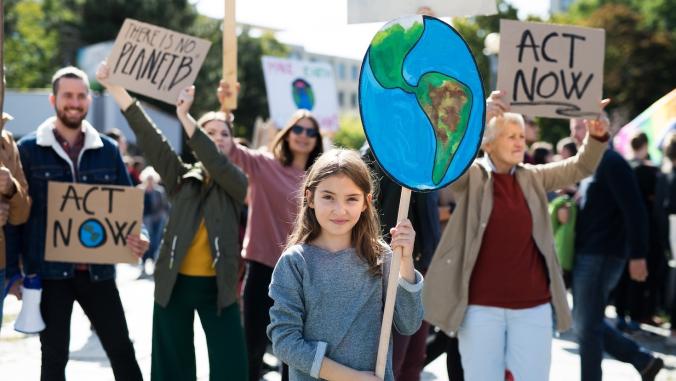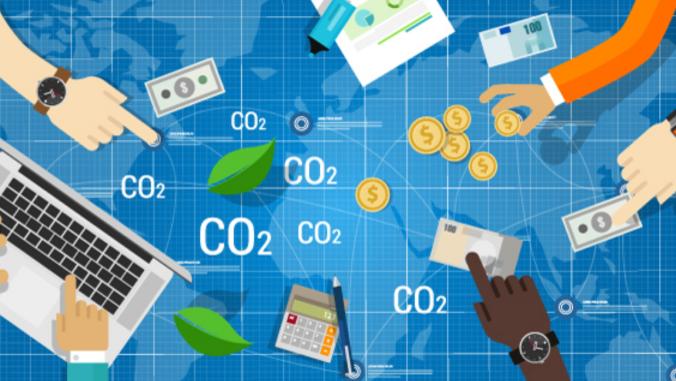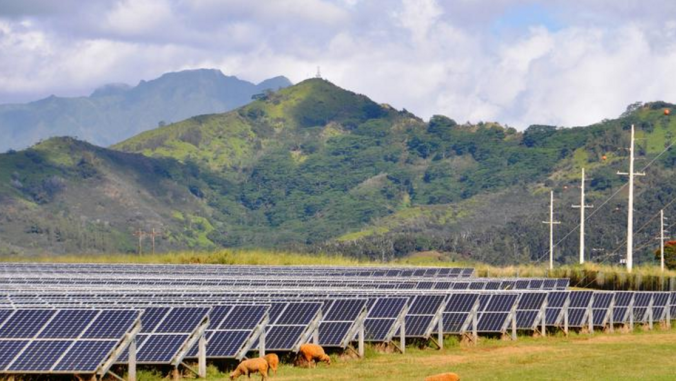The new GHG Protocol: What you need to report now
With Google, Apple, Mars and EDF Energy, the World Resources Institute developed this new standard for reporting emissions from purchased electricity.

As Google, IKEA, Mars, H&M, Swiss Re and dozens of other companies drive down their greenhouse gas emissions — amid increasing scrutiny from consumers, investors and regulators — the methods for actually tallying their emissions have been a step behind.
The need for sophisticated emissions accounting tools is especially pronounced because many companies procure electricity through a mix of arrangements that can include generating electricity on their own, purchasing power from renewable energy producers and buying energy from local utilities. Adding yet another layer of complexity is the increasingly global nature of business, leaving companies with a patchwork of energy production relationships around the world.
To standardize greenhouse gas emissions accounting for all these arrangements, the World Resources Institute on Tuesday released an updated Greenhouse Gas Protocol Corporate Accounting and Reporting Standard. The new GHG Protocol Scope 2 Guidance covers electricity purchases of various stripes.
Beyond aiding in navigating the increasing complexity of businesses' power procurement processes, the nonprofit notes that more precise accounting could have the added effect of helping companies set climate goals.
"Until now, companies have not had standards that address whether and how emissions from these different instruments should be accounted for in their emissions reports," WRI explained in a statement accompanying the new standards. "Companies depend on accurate emissions reports to develop GHG targets.”
The non-binding standards focus on three areas. First, WRI suggests that companies report emissions two ways. First is by location, such as their emissions from using electricity from the local utility; the other is by market, or by the type of energy purchase agreement they've entered to procure renewable sources of electricity.
The new WRI standards also include criteria for how purchased energy contracts are described to provide details on their integrity. Lastly, the standard asks that companies disclose any special terms of their energy purchase agreements. The changes are meant to flush out the base GHG Protocol Corporate Reporting and Accounting Standard that has been used since 2001.
“This is the first standard on purchased electricity,” Mary Sotos, lead author and project leader for the Scope 2 standards development, told GreenBiz of the four-year process. “It was a pretty extensive process to look at this issue and not an easy one to solve.”
Sotos said WRI consulted with 200 companies, organizations and government agencies to get the standards right. Some companies doing the heavy lifting included Mars Incorporated, Google, Facebook, H&M and EDF Energy, along with other companies intent upon transitioning to 100 percent renewable energy.
Facebook as guinea pig
Idealized guidelines are one thing, but putting new practices into action is another issue entirely.
Facebook, in an effort to be as transparent as possible about its carbon emissions and as a consultant to WRI's standards writing effort, tried the process of disclosing GHG emissions both by location and by market-type of electricity purchase in its 2012 carbon footprint report.
"We’ve been calculating and sharing our carbon impact from purchased electricity in two ways since 2012: We use contractual emissions factors to provide a market-based picture, and we use location-based factors to provide a geographical perspective," said Lyrica McTiernan of Facebook's sustainability team. "We believe this approach provides a more nuanced understanding of the emissions associated with our electricity purchases than would otherwise be possible."
A WRI case study report on Facebook's pilot test of the standard stated that Facebook sought data points that would "allow stakeholders and internal decision-makers to draw the comparisons that were most relevant to their specific needs."
Businesses consume half of all the electricty produced, she said, and generation of electricity, steam, heating and cooling accounts for 40 percent of global greenhouse gas emissions. But an increasing number of companies are supplanting the energy purchased from nearby utilities with purchases of more solidly renewable sources. Investment in renewable energy grew to $310 billion in 2014, according to Bloomberg New Energy Finance, up fivefold in a decade.
Mars is one company moving to procure all of its electricity needs, at least in its U.S. operations, from renewable sources. It is building a 200 MW wind farm in Mesquite Creek, Texas, to generate electricity for all 70 of its U.S. facilities. Kevin Rabinovitch, global sustainability director for Mars, said his company was testing different approaches to account for the types of energy emissions covered by the standard by running pilots at its the Mesquite Creek Wind farm.
“This guidance is a powerful tool to help corporations achieve ambitious, science-based climate targets,” he said. The standard “removes uncertainty from the minds of corporate decision makers by providing an external reference.”
The reductions in GHG emissions become real when measured against a science-based standard rather than a public relations play: "Good accounting is the difference between a sustainability program that makes a difference to people and the plane and one that is based on perception and image."
EDF Energy, based in the United Kingdom, was also a major consultant to the WRI in devising the new standards. John Cockin, director of business services at EDF Energy, said the company was happy to share its technical knowledge about electricity generation and source verification. Publishing a standard for widespread use "fits with our belief that consumers should be more aware of where their electricity comes from ... (and) will support the longer term development of a diverse, low-carbon electricity mix."
Consumers and investors want evidence
Part of the rationale for reporting emissions is that consumers, investors and environmental watchdogs want to know.
“Many businesses want to be judged on their carbon emissions based on the decisions they’ve made — not just their geographical location — so it’s only fair that they have clear guidance about how to report their emissions objectively," Cockin said. "We believe that the GHG Protocol Scope 2 Guidance meets this need, globally.”
Google was also very involved in helping WRI devise the new standards. The tech company has a goal to use 100 renewable energy in its operations, and as of year-end 2013, it's 35 percent of the way there.
To deliver on the goal across its farflung global business, Google signs long-term contracts for renewable energy to provide the utilities and firms developing new renewable energy projects with financial certainty about ongoing demand. That has allowed utilities to invest in expanding the amount of renewable energy on their grids. Google said it has signed seven wind energy contracts for 1,040 megawatts of power.

The first GHG Protocol Corporate Reporting and Accounting Standard was published in 2001 as the result of a partnership between WRI and the World Business Council for Sustainable Development which recognized the need for a credible way to measure programs for reducing emissions, as business, governments and environmental groups clamored for action in the wake of the Kyoto international climate meeting. It was revised once, in 2004.
Given that the GHG Protocol Corporate Standard is used by most large companies the world over, with 86 percent of Fortune 500 companies responding to a Climate Disclosure Project survey about emissions using the GHG Protocol to report them, it's likely to have a big impact.





